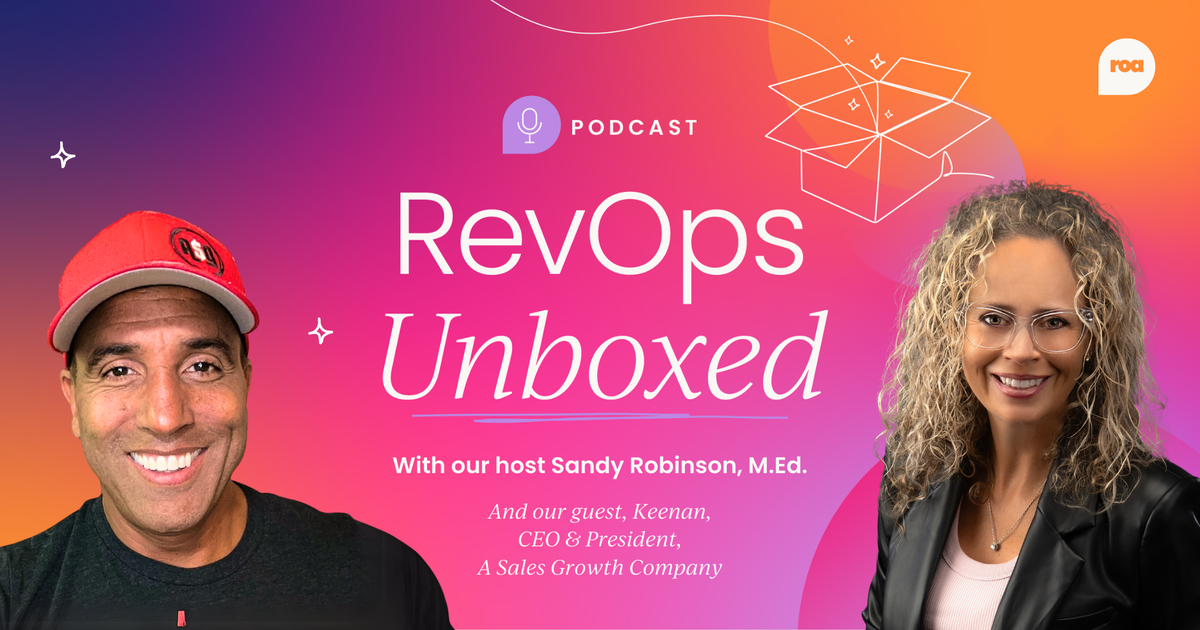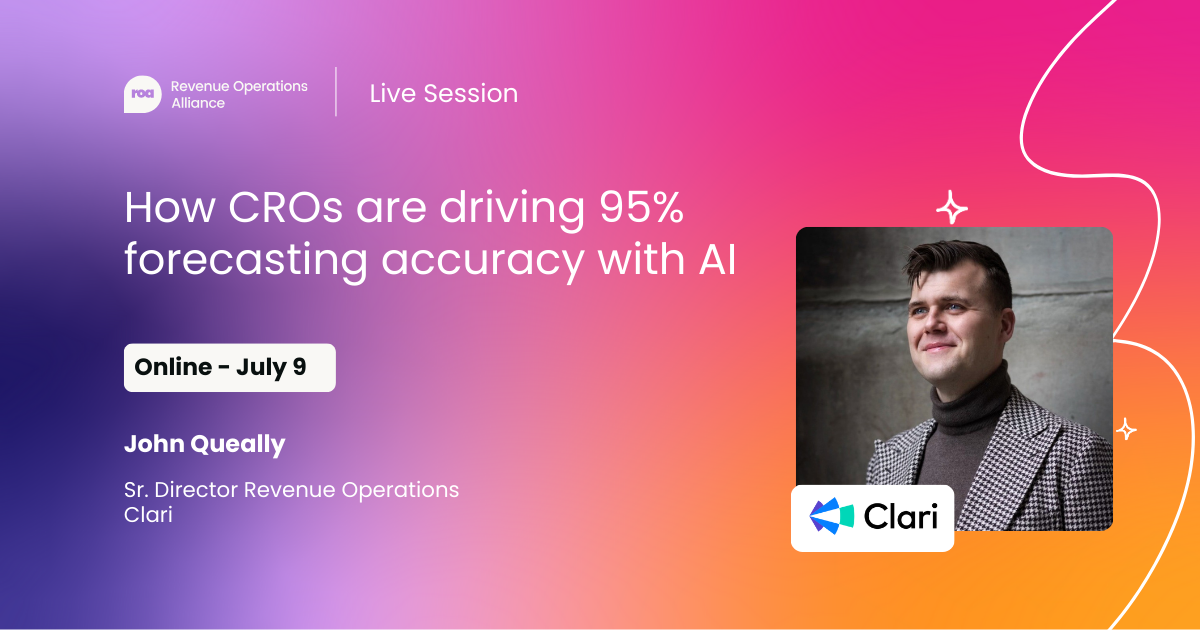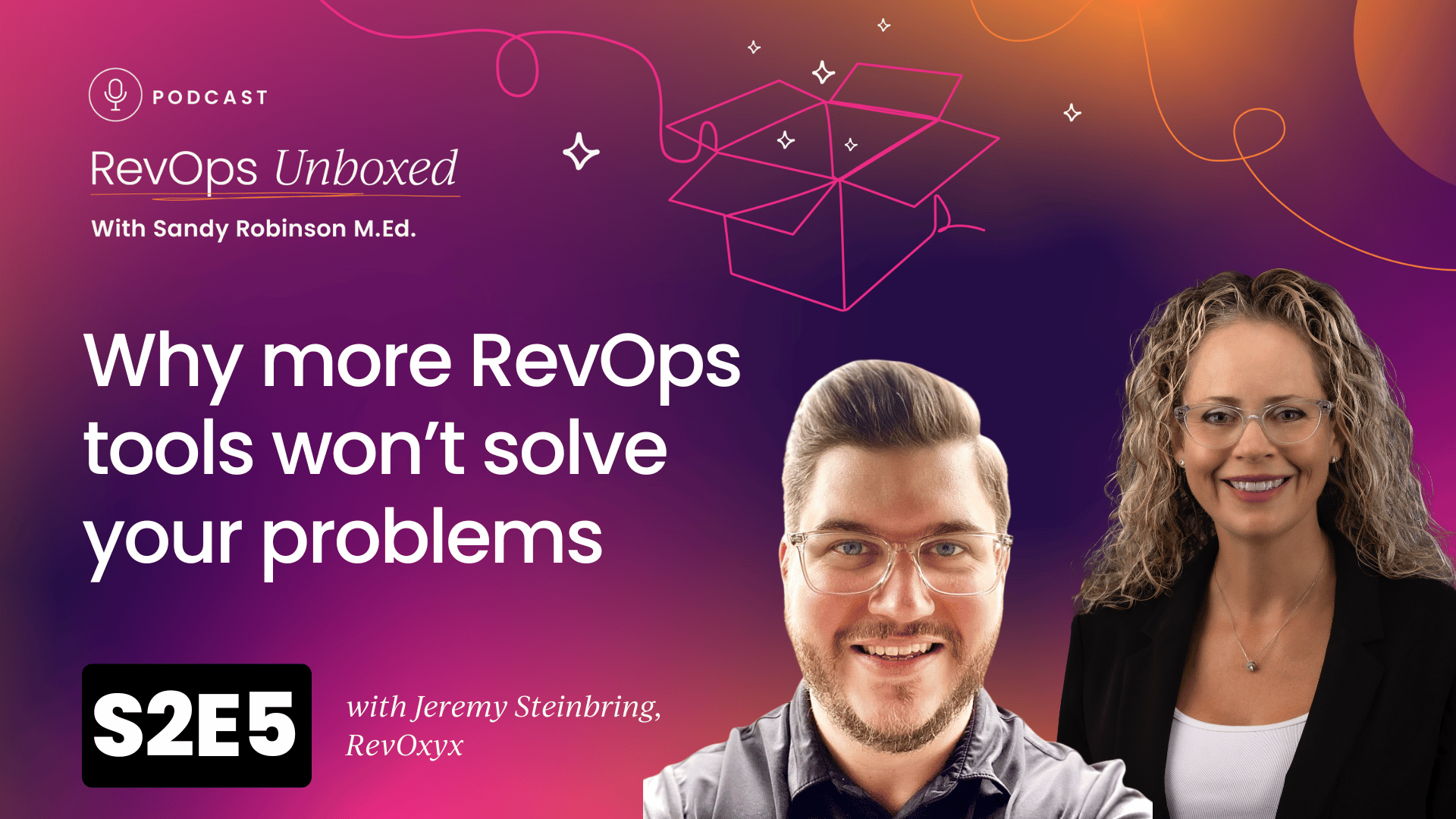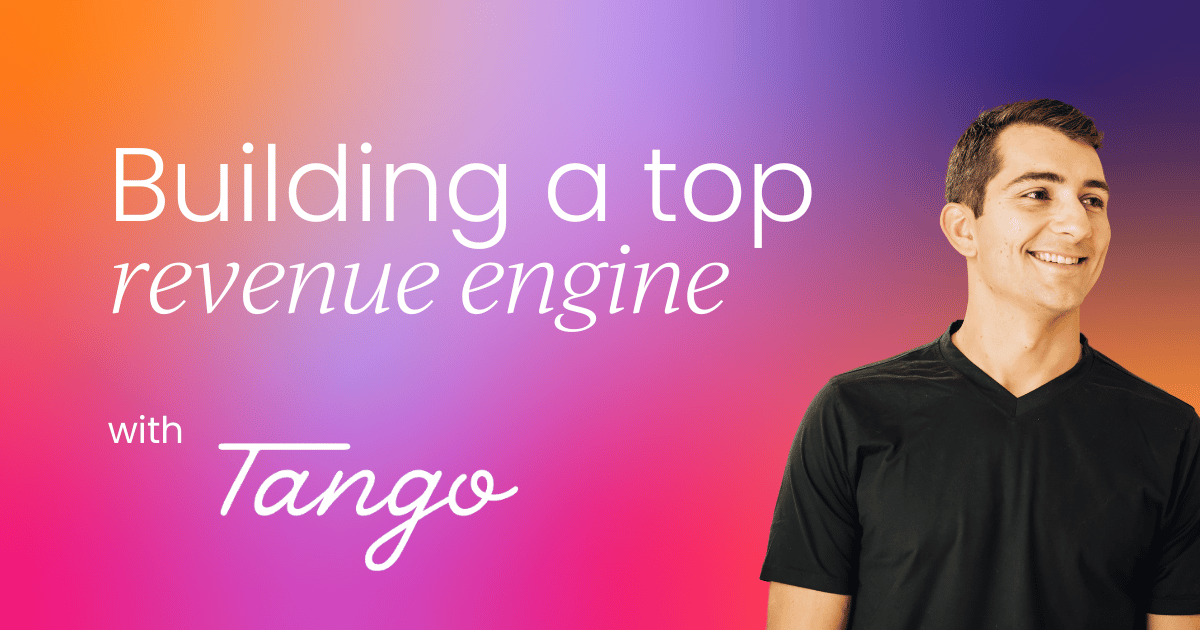What does it really take to build a revenue engine that scales?
It’s one of those questions that seems simple – until you’re in the thick of it. And if you work in RevOps, chances are you’re there right now: juggling strategy and execution, people and process, tooling and transformation – all while trying to make revenue more predictable and customer experiences more seamless. It’s a lot.
Before co-founding Tango, I started out in venture capital. In VC, you get this high-altitude view of the business world. You see all the macro trends, you get to think about market shifts, big opportunities, and how to create value.
But what you don’t get is an appreciation for the nitty-gritty operational grind it takes to actually do the thing – to build something meaningful, to generate revenue, to serve customers.
Turns out, building a company means building a revenue engine and aligning every piece around delivering real value to your customers. The faster you learn that lesson, the better off you are, so let’s dive straight in!
Keep it simple, seriously
One of the earliest and most important lessons? Keep it simple. Seriously.
We leaned on the KISS principle – "keep it simple, stupid" – from day one. When you’re setting up a revenue motion, it can feel like there are a million shiny tools and ideas pulling you in every direction. You want to dive into this metric or adopt that platform.
But if you’re not careful, complexity creeps in. Then it compounds. Suddenly, you’re drowning in systems and processes no one understands.
So what did we do instead? We made the customer journey our anchor. Every process, system, even our headcount – we mapped it back to the customer journey. Where is the customer in their journey? What do they need? What are we doing to help them get value faster?
And just as importantly, we built in space for continuous learning. In the early days, we carved out time to ask better questions:
- Why didn’t we hit our booking targets this week?
- What was different?
- What are we hearing in onboarding?
These moments of curiosity let us catch problems early and get smarter over time. You won’t get a second chance to learn like this once you start scaling. So don’t skip it.

Impact players > box checkers
One of the frameworks we use internally is "impact players vs. typical contributors."
It shows up in performance reviews, feedback conversations, and growth discussions. Here’s the difference: typical contributors wait to be told what to do. They do what’s on the job description. They play it safe. Impact players take agency. They find the problems no one else is talking about. They make their boss’s job easier. They drive results that move the business forward.
That mindset is non-negotiable for us at Tango. Since you work in RevOps, I’d argue it has to be non-negotiable for you too.
Why? Because this role doesn’t come with a clean playbook. Most people don’t fully understand RevOps. You’re often the first one in the role. You’re starting up processes from scratch, and you’re doing it while keeping everything running.
It’s not about checking boxes. It’s about solving problems that matter, and that takes initiative, not just execution.
The blessing (and curse) of revops
I have so much respect for RevOps professionals because the job demands this rare combo of high-level strategy and deep-in-the-weeds execution.
You need to be able to see the big picture – what’s changing in the market, how your go-to-market motion needs to evolve, what risks and opportunities are out there. But you also need to roll up your sleeves and fix a pipeline issue, rebuild a workflow, or clean up dirty data.
You don’t get the luxury of choosing one or the other. RevOps is both.
Done well, this is a leadership role. Whether or not you have the title, you’re shaping how your company grows revenue, which means you're in one of the most influential seats at the table.

AI is here. Learning is no longer optional
The other side of the job? Keeping up with the tools.
You can’t wait for a conference or a quarterly vendor email to learn what’s out there anymore. That playbook’s dead. The tech stack is evolving too fast, and you need to be curious now. You need to understand what’s possible. Not everything will be relevant today, but it might be tomorrow.
Take demos. Ask better questions. Build a mental model of your stack. Don’t just ask if a tool integrates – ask how. What does the integration actually do? What does it push into your CRM? What will your reps have to learn?
We talk to RevOps folks all the time who say, "We’re just here to learn." And that’s the right approach. You don’t need to chase every trend. But you do need to know what’s coming so you can be ready when it matters.
Your biggest obstacle
One of the biggest mistakes I see? Spreading your source of truth across too many tools.
If your reps are logging insights in Gong, but your CRM doesn’t reflect them, you’re in trouble. If you’re doing core forecasting work in Clari, but your finance team lives in Salesforce, you’ve created silos.
Your CRM should remain the single source of truth. Every customer interaction. Every data point. Every insight.And if a new tool makes that harder? Think twice before adopting it.
Yes, integrations exist, but most aren’t fully bi-directional. Some require ongoing dev support. Some create user behavior changes that add friction. All of that creates more work for RevOps.
Choose tools that support your CRM, not ones that require you to work around it.

What we're building with Tango
This problem is part of what inspired us to build Tango.
Let’s face it: RevOps wasn’t designed to spend half their time as CRM tech support, but here we are. You’re managing requests, updating workflows, creating validation rules, and trying to support a growing sales team with limited resources.
Tango acts like your AI-powered CRM admin. It automates updates, enforces pipeline rules, and removes manual data entry – all through a browser extension. No code. No dev time. No behavior change.
It’s not replacing RevOps. It’s freeing you up to be RevOps again.
When we say it’s no-code, we mean it. You don’t need to build flows. You don’t need to learn syntax. You just drop in the process you want, and Tango helps make it happen – in the systems your team already uses.
That’s the future we believe in: automation that works with your stack, not around it.

How to make your case for budget (without whining)
If you're in RevOps and need budget for a tool or a headcount, here's the playbook I recommend:
- Start with the problem.
- Show the cost of doing nothing.
- Offer two or three solutions (including the one you recommend).
- Tie your pitch to a company goal or leadership priority.
Don't show up saying, "We need a tool." Show up saying, "We have a bottleneck that's stopping us from hitting X. If we fix it, we get Y. Here's what it'll take."
Hiring is expensive. It's slow. It requires onboarding and ongoing overhead. But a well-positioned tool with clear ROI? Much easier to get across the line.
Final thoughts
If I can leave you with one thing, it’s this: stay curious.
AI isn’t a trend – it’s a platform shift. And the RevOps role is evolving fast. That’s exciting, but it also means you can’t afford to sit still.
Stay plugged into the community, and learn from your peers.
You don’t need to reinvent the wheel every time. You just need to stay in the game.
The revenue engine you build today will look very different in a year. But if you stay focused on the customer, keep things simple, and never stop learning, you’ll always be ahead of the curve.



 7 min read
7 min read
 Follow us on LinkedIn
Follow us on LinkedIn







